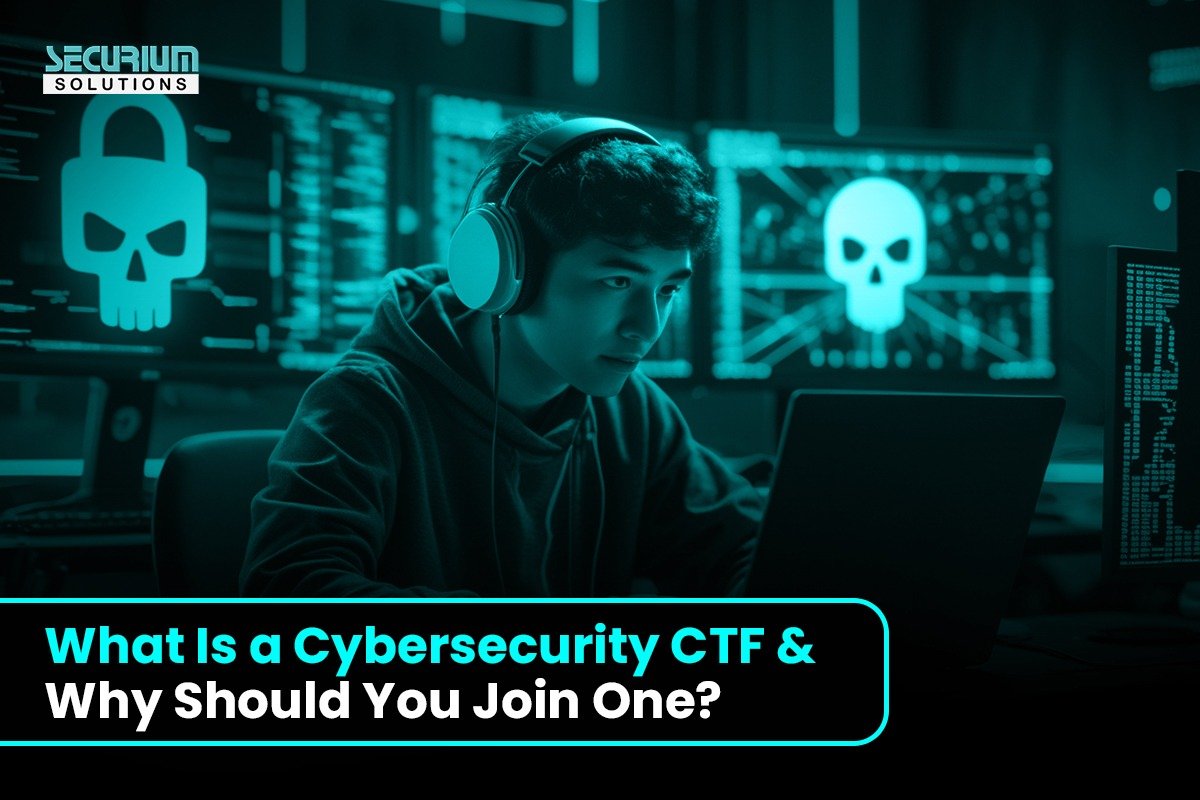With the advanced tools, numerous certifications, and evolving technologies in cybersecurity, one can easily get lost in the web of complex terminologies. Moreover, what if you could set aside the theoretical learning and actually feel like you are hacking in a legal and enjoyable manner?
This is the point at which Cybersecurity CTF Competitions come into play. These competitions integrate problem-solving, teamwork and cyber war simulations. Therefore, whether you are a novice or an experienced security analyst, CTFs can compete for your skills along with engaging with the cybersecurity community.
What Is A CTF?
In simpler terms, a CTF competition is a cybersecurity competition where individuals or groups work to solve security challenges to capture flags. The flags are usually strings of text. For instance, ‘flag {you_found_me}’ serves as evidence that the contestant has successfully completed the challenge. CTFs depict real world problems one encounters in cybersecurity, however they do so in controlled settings..
Different Types Of CTF Challenges
CTFs can comprise of various categories which tackle different domains of cybersecurity:
1. Binary Exploitation
This category deals with the understanding of compiled programs and exploitation of vulnerabilities that accompany programs such as buffer overflows, memory corruption, and format string bugs.
2. Analyzing or Reverse Engineering
Requires analyzing the various tools such as Ghidra or IDA Pro and figuring out ways to unlock the flag and what the compiled binaries do. Most times, it requires decompilers.
3. Exploiting Web Applications
It could be anything from authentication issues that aren’t secure, SQL injection, cross-site scripting (XSS), or even directory traversal. Essentially, looking for issues in web applications.
4. Forensics
Looking through transformed data, whether in disk images, memory dumps, network packets or files that have been destroyed, to find hidden meaningful data.
5. Cryptography
Understanding the most simplistic concepts of modern crypto or classic ones in order to break or change weak encryptions.
6. Dopestyle OSINT (Open Source Intelligence)
Gaining information using publicly available sources across numerous website tools without the need to hack into anything.
7. Multimedia Steganography
Hiding/changing information from images, audio, or videos.
8. Logic, Miscellaneous or Trivia
These could come from tweaking with hardware, solving puzzles and riddles or even obscure logical problems.
Why Should you Join CTF?
1. Learning By Doing
Until you try something yourself, reading books and taking courses will not help you in any way. CTFs thrust you into real-life hacking situations. From breaking web applications to decoding network traffic. You aren’t just reading about vulnerabilities; you’re putting them in action.
2. Step Up Your Learning Speed
Unlike formal education, CTF events offer hands-on experience with a wide variety of tools, concepts, and avenues of exploitation in a fraction of the time. One weekend event encompasses the following fields of study:
– The command line interface of the Linux Operating System
– Wireshark for capturing and analyzing network traffic
– Programming with Python
– Reverse engineering executable files
– Exploiting vulnerabilities in blockchain systems
3. Elevate Your Resume
Participation in CTFs distinguishes applicants in a competitive labor market. It showcases:
– Having real experience in relevant concepts
– Commitment towards acquiring new skills
– Teamwork and constructive outcomes under time constraints
Many organizations consider experience obtained in Capture the Flag competitions as equivalent to previous internship experience, particularly in PenTesting, Threat Hunting, and Malware Analysis positions.
4. Become Part of a Worldwide Community
CTFs are much more than just technical competitions—they are global gatherings. Interact with other hackers, participate in forums and Discord, and even obtain mentors. Some larger CTFs attract thousands of participants around the globe.
The CyberSecurity field can be quite lonely—CTFs allow for collaboration.
5. Entry Point for a Cybersecurity Career
Several CTF enthusiasts have moved into careers as penetration testers, security researchers, and threat intelligence analysts. Some companies run private CTF competitions for their recruitment drives to scout for exceptional talent.
How do CTFs Work?
Structure
CTF competitions usually have the following structure:
- Jeopardy style: Individual challenges are placed in categories with assigned point values. Contestants unlock challenges by successfully answering others in the designated category.
- Attack-Defense: Teams defend their own services while simultaneously trying to breach others’ servers (red vs. blue teams).
- King of the Hill (KoTH): Maintain control of the system for the longest period of time.
Duration
- Short CTFs: 4-8 hours (weekend or evening events)
- Long-form CTFs: 24-72 hours global events
- Persistent CTFs: challenges that are always available
Where to Play
- SecuriumX
What You Need to Get Started
- Basic Setup
- Linux environment (VM or WSL)
- Foundational knowledge of Python, Bash, Powershell , Linux , Networking Ports
- Basic tools: nmap, Burp Suite, Wireshark, Ghidra, John the Ripper, CyberChef, strings, grep, and exiftool
- Learning Resources
Books:
- “The Web Application Hacker’s Handbook”
- “Practical Malware Analysis”
- “The Art of Exploitation”
Web:
Pro Tips for CTF Beginners
- Stop caring about points—focus your passion on trying to learn something.
- Take notes. Note everything down whether it worked or not.
- Watch Read writeups. Participate in a CTF and afterwards take the time to review how other participants solved the various challenges. Look for challenges that might fill gaps in your knowledge.
Final Thoughts
CTFs are, in my opinion, the most entertaining yet effective ways to teach you cybersecurity. Whether you are an aspiring beginner in the field, aim to hone your red teaming skills, or simply looking to connect with fellow cyber enthusiasts, CTFs cater to all sorts of needs.
To kickstart your journey, you don’t need to be an expert; being curious would do the trick.




